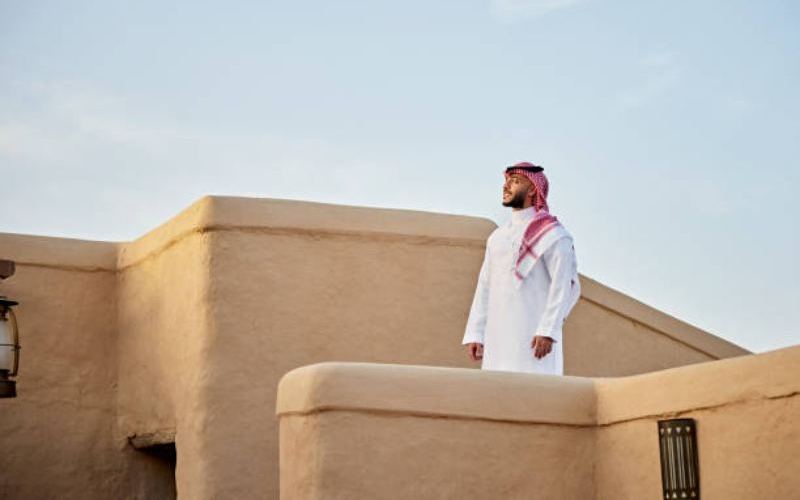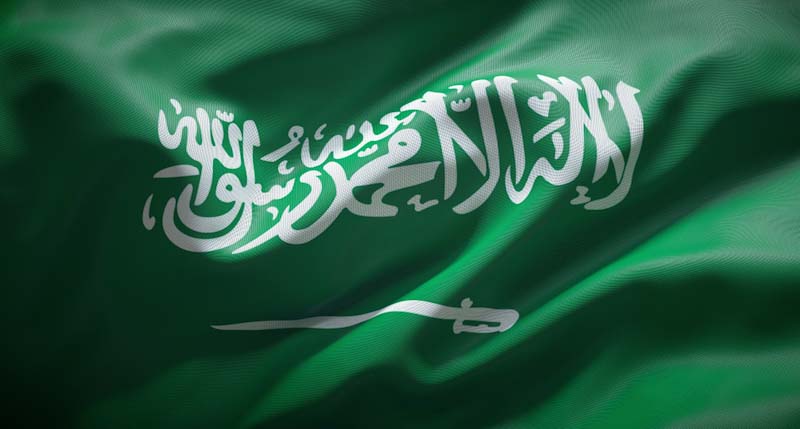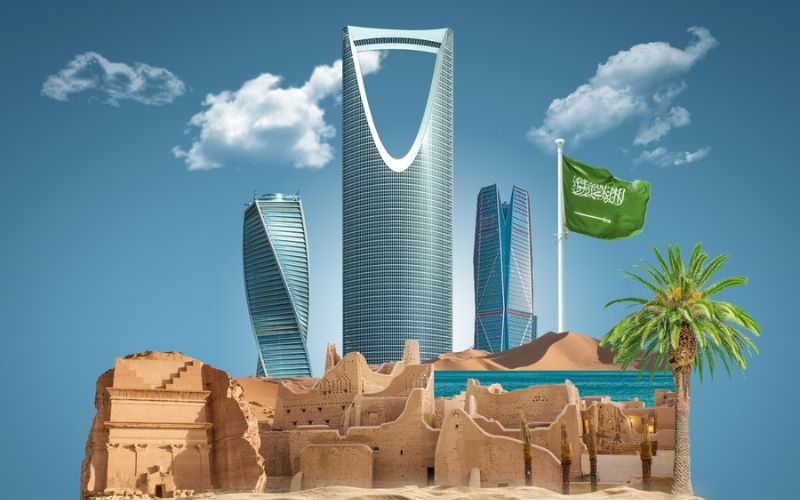Think camel rides through golden deserts, exploring ancient ruins that look straight out of a movie set, and savouring dishes so good they’ll spoil you for life. Whether you’re scaling the Edge of the World or bargaining for treasures in bustling souks, Saudi Arabia is ready to surprise, delight, and give you stories you’ll be telling for years. Buckle up—it’s going to be an unforgettable ride! With this guide to one week in Saudi Arabia, you can explore the kingdom’s blend of rich history, modern marvels, and breathtaking landscapes.
Whether you’re going for one week in Saudi Arabia road trip itinerary, planning to experience Ramadan, or considering where to stay, this guide covers everything from must-visit destinations to the best local cuisine.
How to Reach Saudi Arabia?
Getting to Saudi Arabia is easier than ever, thanks to its growing tourism infrastructure and simplified visa processes. Most international travelers can enter via major airports like King Khalid International Airport (Riyadh), King Abdulaziz International Airport (Jeddah), or King Fahd International Airport (Dammam). Saudi Arabia offers a convenient eVisa system for tourists from eligible countries, allowing visitors to apply online in minutes. The eVisa is typically valid for multiple entries over a year, with each stay lasting up to 90 days. For those not eligible for an eVisa, a consular visa can be obtained by applying at a Saudi embassy or consulate.
Visitors should have a passport valid for at least six months and may need to provide proof of accommodation and a return ticket. It’s essential to check specific visa requirements based on nationality, as regulations may vary.
One Week in Saudi Arabia
Day 1-2: Riyadh – Modernity Meets Tradition
Things to Do in Riyadh: Day 1
Morning:
- Kingdom Centre Tower: Begin your journey with a panoramic view of Riyadh from the Sky Bridge atop the Kingdom Centre Tower. The modern architecture is a striking contrast to the city’s traditional roots.
- National Museum of Saudi Arabia: Dive into the nation’s history with exhibits that showcase the country’s rich heritage, from pre-Islamic civilizations to modern-day achievements.
Afternoon:
- Al Masmak Fortress: Visit this historic mud-brick fortress where the unification of Saudi Arabia began. It’s a perfect place to learn about the kingdom’s founding.
- Traditional Lunch: Enjoy authentic Saudi cuisine at Najd Village, a restaurant designed to reflect the traditional Najdi style. Try kabsa or jareesh for an authentic taste.
Evening:
- Riyadh Boulevard: Explore Riyadh Boulevard, a bustling entertainment and dining area with modern cafes, shops, and live performances. It’s a great place to experience the city’s vibrant nightlife.

Things to Do in Riyadh: Day 2
Morning: Traditional and Historical Landmarks
- Diriyah (At-Turaif District):
Begin your day with a visit to Diriyah, the birthplace of the Saudi state and a UNESCO World Heritage Site. Explore the At-Turaif District, known for its mudbrick architecture and historical significance. Wander through narrow alleys, learn about the Al Saud family’s legacy, and visit museums that provide insights into Saudi Arabia’s formation. - Al-Bujairi Heritage Park:
Adjacent to Diriyah, Al-Bujairi is a picturesque park offering beautiful views of At-Turaif. Enjoy a leisurely walk along the paths, visit the local craft shops, and stop by traditional cafes for a cup of Saudi coffee (qahwa) and dates.
Afternoon: Immersing in Culture and Heritage
- Souq Al-Zal: One of Riyadh’s oldest markets, Souq Al-Zal, is a treasure trove of traditional goods. Browse through stalls selling handwoven carpets, antiques, jewelry, spices, and traditional clothing. It’s the perfect place to experience the vibrant local culture and pick up authentic souvenirs.
- Murabba Palace: Built by King Abdulaziz in the early 20th century, Murabba Palace is an excellent example of traditional Najdi architecture. The palace showcases the simple yet elegant design of the early Saudi state. Explore the beautifully preserved rooms and exhibits that highlight the life of the founding king.
- Lunch at Najd Village Restaurant: Experience authentic Saudi cuisine in a setting that reflects traditional architecture. Savor dishes served in a cozy, heritage-inspired ambiance.
Evening: Modern Marvels and Leisure
- Riyadh Front: In the evening, head to Riyadh Front, a modern entertainment complex that combines shopping, dining, and leisure activities. Explore high-end boutiques, enjoy gourmet meals at trendy restaurants, or simply relax at one of the many cafes while soaking in the city’s modern vibe.
- Edge of the World (Optional Sunset Excursion): For those seeking adventure, a sunset visit to the Edge of the World is a must. Located about 90 km from Riyadh, this dramatic escarpment offers breathtaking views over the vast desert plains below. The experience of watching the sun set over the edge of a towering cliff is truly unforgettable.
Where to Stay in Riyadh?
- Narcissus Hotel & Spa (Luxury)
- Centro Waha (Mid-range)
Must-Try Food in Riyadh
- Kabsa: A fragrant rice dish with spiced meat or chicken, similar to biryani.
- Mandi: Slow-cooked meat with rice, traditionally cooked in a tandoor oven.
- Jareesh: A wheat and meat porridge popular in Riyadh.
Tip: During Ramadan in Saudi Arabia, restaurants open after sunset, offering lavish iftar buffets where locals break their fast.
Day 3: Al-Ula – Ancient Marvels in the Desert
Top Things to Do in Al-Ula
Morning:
- Elephant Rock: Transport to a land of magic; Al Ula is a historical wonder. There are so many things to do in Al Ula that are must be seen to be believed. Visit this iconic rock formation that resembles an elephant, standing majestically in the desert landscape.
- AlUla Oasis: Take a walk through the lush date palm groves of the oasis, a serene contrast to the arid surroundings.
Afternoon:
- Dadan and Jabal Ikmah: Explore the ancient city of Dadan, once a powerful trading hub, and Jabal Ikmah, often referred to as an open-air library for its ancient inscriptions.
Evening:
- Relax at your desert resort or enjoy a traditional dinner under the stars.
Where to Stay in Al-Ula
- Habitas Al-Ula: Eco-luxury resort amidst the desert landscape.
- Shaden Resort: A traditional yet comfortable desert retreat.
Must-Try Food in Al-Ula
- Dates and Coffee: Al-Ula’s dates are a local specialty, paired with traditional Arabic coffee (gahwa).
- Matazeez: A doughy dish with meat, vegetables, and spices, cooked in a savory broth.
Day 4-5: Jeddah – The Coastal Gem
Things to Do in Jeddah: Day4
Morning:
- Fly to Jeddah, the cultural and commercial hub on the Red Sea coast.
Afternoon:
- Al-Balad: Explore the UNESCO-listed historic district of Jeddah, known for its coral stone buildings and vibrant souks. Don’t miss the iconic Naseef House.
- Lunch at Al-Nakheel Restaurant: Savor fresh seafood and traditional dishes like sayadiyah and mutabbaq.
Evening:
- Jeddah Corniche: Stroll along the newly developed Corniche, featuring modern art installations, fountains, and the stunning King Fahd Fountain, the tallest in the world.

Things to Do in Jeddah: Day5
Morning:
- Scuba Diving or Snorkeling: Explore the vibrant marine life of the Red Sea. Jeddah offers some of the world’s best diving spots with colorful coral reefs and diverse marine species.
Afternoon:
- Obhur Creek: Enjoy water activities like jet-skiing, paddleboarding, or simply relax by the serene waters.
Evening:
- Dinner Cruise: End your day with a luxurious dinner cruise along the Red Sea, enjoying the cool breeze and panoramic views of the city.
Where to Stay in Jeddah
- The Ritz-Carlton Jeddah (Luxury)
- Crowne Plaza Jeddah (Mid-range)
Must-Try Food in Jeddah
- Sayadieh: A seafood dish made with rice, caramelized onions, and fragrant spices.
- Mutabbaq: A stuffed flatbread filled with meat or vegetables, often sold at street markets.
- Saleeg: A creamy rice dish with chicken, resembling risotto.
Tip: If visiting during public holidays in Saudi Arabia, expect vibrant celebrations, especially on National Day.
Day 6: Taif – The Mountain Retreat
Things to Do in Taif
Morning:
- Drive to Taif, known for its rose gardens and cool climate.
- Shubra Palace: Explore this historic royal residence, known for its unique architecture blending Islamic and Roman styles.
Afternoon:
- Al-Hada Mountain Cable Car: Take a thrilling cable car ride over the scenic Al-Hada mountains, offering breathtaking views of the surrounding landscape.
Evening:
- Visit a traditional rosewater distillery to see how the famous Taif roses are processed into rosewater and essential oils.
Where to Stay in Taif
- Awaliv International Hotel
- InterContinental Taif
Must-Try Food in Taif
- Rosewater Desserts: Taif is famous for its rosewater, used in many traditional sweets.
- Fatayer: Small pies stuffed with cheese, spinach, or meat, often enjoyed as a snack.
Day 7: Return to Riyadh or Extend Your Trip
Morning:
- Fly back to Riyadh for your departure preparations. If time allows, visit the Riyadh Zoo or the Diplomatic Quarter for a leisurely stroll.
Afternoon:
- Shopping at Riyadh Park Mall: Pick up souvenirs such as Arabian perfumes, dates, and traditional handicrafts.
Evening:
- Depart from Riyadh, taking home memories of Saudi Arabia’s rich culture, hospitality, and stunning landscapes.
Tips for a Saudi Arabia Trip

Getting Around Saudi Arabia
- Driving: Renting a car is ideal for a Saudi Arabia road trip itinerary as it offers flexibility to explore remote areas.
- Domestic Flights: Consider flights between major cities to save time on longer distances.
Cultural Etiquette
- Dress Code: Dress modestly. Men should avoid shorts, and women should wear an abaya in public.
- Prayer Times: Shops and restaurants close during prayer times, so plan accordingly.
- Ramadan in Saudi Arabia: Non-Muslims should avoid eating or drinking in public during the day.
Currency and Payment
- The currency is the Saudi Riyal (SAR). Credit cards are widely accepted, but it’s useful to have cash for smaller shops and markets.

A travel influencer, adventurer and blogger on a mision to dicover the hidden gems of this beautiful planet. For me traveling isn’t a hobby, but a way of living.



